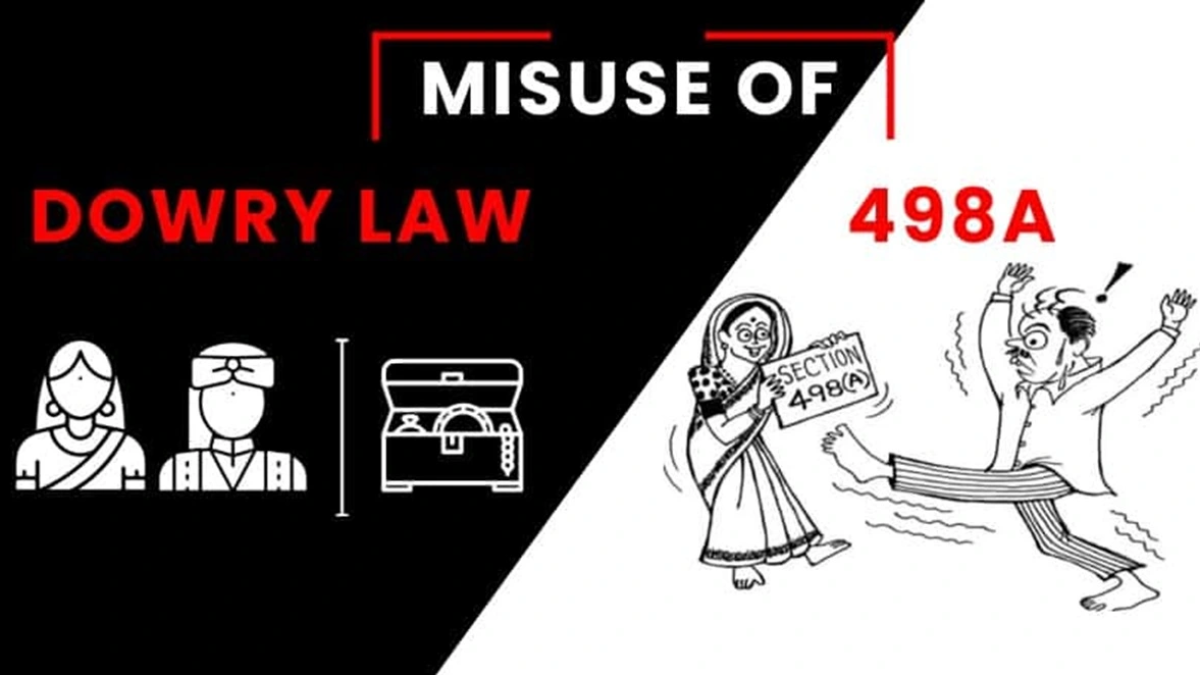There are always two sides of a coin; similarly, every law has its use as well as misuse. The anti-dowry laws have proved to be a panacea for women at the same time they have also proved to be a nuisance for men. Not all dowry cases filed by women are true and in more than 40% cases filed; the allegations made by women are false.
In recent times, matrimonial litigation in the country has increased significantly and there is a greater disaffection and friction surrounding the institution of marriage, now, more than ever. Along with the development of laws to protect women, there have been instances of extreme misuse of these laws by women themselves. Over the years, there have been allegations that laws made to protect women from dowry demands and dowry deaths were grossly misused by them by making false complaints or exaggerated allegations for frivolous cases. There is an increased tendency to employ provisions such as Section 498A of the Indian Penal Code, 1860, as instruments to settle personal scores against the husband and his relatives. Section 498A was passed in 1983 with the aim to prevent and punish dowry demands and cruelty committed upon a married woman by her husband and her in-laws by facilitating rapid state intervention but instead it has been known to be one of the most abused provisions under Indian Penal Code. So much so that Supreme Court in the case of Sushil Kumar Sharma v. Union of India, AIR 2005 SC 3100, stated that Section 498A of IPC was incorporated for the protection of women which is being maliciously misused and identified this section as a “Legal Terrorism”.
There is rampant misuse of dowry laws where relatives of the husband are falsely implicated without analysing the long – term ramifications of a trial on the complainant as well as the accused. In several cases where the demands of the wife are not being fulfilled and in order to harass the husband and his family, or if the marriage is strained because of any other extraneous reasons, they lodge a false complaint with the nearest police station and the husband and/or his family are instantly arrested without investigations. There have also been cases of suicide by the husband or his family members during the course of their trial because of the embarrassment they face due to these false allegations. Thus, it is essential to note that false implication by way of general omnibus allegations made in the course of matrimonial dispute, if left unchecked would result in misuse of the process of law. A criminal trial leading to an eventual acquittal also inflicts severe scars upon the accused and such an exercise must therefore be discouraged.
In 2014, in the case of Arnesh Kumar v. State of Bihar and Anr, (2014) 8 SCC 273, the Supreme Court delved deep into the issue and passed guidelines for Police to follow before making any arrests under Section 498A. The two-judge bench of the Supreme Court headed by Justice Chandramauli Kumar Prasad said that the simplest way to harass the husband is to get him and his relatives arrested. The Judges stated a notable point that in many cases the bedridden grandfathers and grandmothers of the husbands, and their sisters living abroad for decades are arrested.
In the immediate aftermaths of this judgment, the number of cases registered in India under Section 498A and the number of arrests in such cases went down by a good margin. Police were now bound to issue summons to the accused to join the investigation under Section 41A of the Criminal Procedure Code unlike before where they could immediately arrest entire families on registration of the FIR. This brought some respite to victims of misuse of this section as the Supreme Court through this judgment endeavoured to ensure that police officers do not arrest accused unnecessarily and Magistrate do not authorise detention casually and mechanically.
In 2017, in the case of Rajesh Sharma v. State of Uttar Pradesh, Criminal Appeal No. 1265 of 2017, the Supreme Court directed the formation of Family Welfare Committees at the District level by the District Legal Services Authority to look into all the cases reported under Section 498A and submit their reports within a month, after which an investigation officer will be assigned to investigate the case. This judgment was passed owing to widespread abuse of such laws and various other guidelines were issued to curb multiple litigations, harassment of senior citizen parents of the husband and much more. It was a well-meaning judgment, but feminists outraged against it and eventually, part of the judgment was altered in 2018 after re-examination by a larger bench of the Supreme Court. Since Family Welfare Committees were extra-judicial committees, Supreme Court directed that these committees could not exercise statutory function. Though the court did not reverse any protective measures granted against immediate arrest and other directions were retained, the media went berserk reporting that immediate arrests under Section 498A were once again allowed. Since then, in various States, the police are not heeding to the Supreme Court guidelines and making immediate arrests under this charge.
NCRB Data indicates that while the highest number of FIRs are filed under Section 498A, the conviction rate is one of the lowest. However, to conclude that the section has been misused just because of the low conviction rate would be misleading. There are various complexities around this law. The offence need not be explicit and need not have witnesses. The persistent social stigma also does not allow women to come forward and register complaints. Lack of awareness about the law and available rights is another factor. An in-depth analysis taking into consideration the causes of violence, social factors, and the role of the police investigation is necessary to understand this dichotomy between a high number of cases and the low conviction rate.


Add a Comment